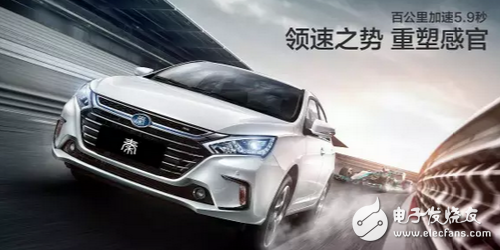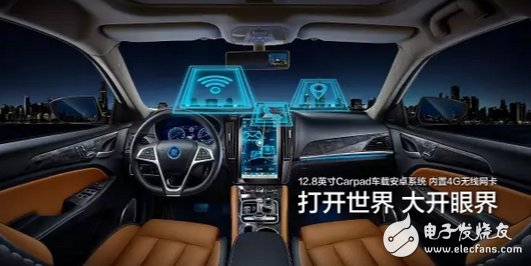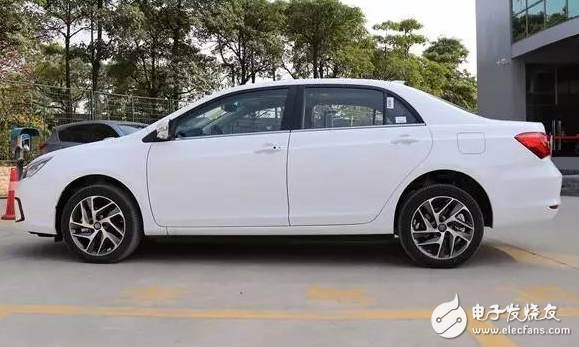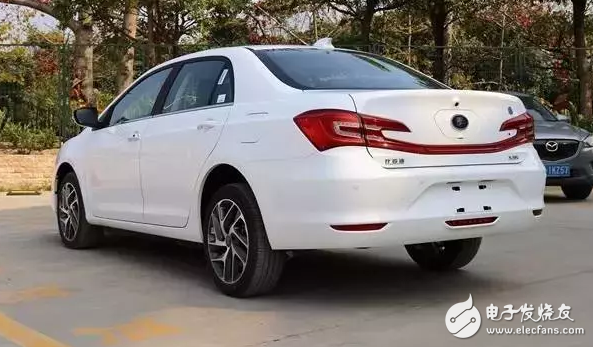For quite some time now, the concept of "bringing the mid-range car market to the global stage" has been considered the "golden rule" of the Chinese automotive industry. Particularly within the 13 to 15 million yuan price bracket, where dozens of brands and hundreds of models are densely packed, it has become a necessity for car manufacturers. The 2017 BYD Qin, priced at 149,900 yuan with an extra 10,000 yuan in electricity subsidies, aims to capture this lucrative segment. With its unique technological edge and innovative driving experience, it's poised to set a new trend.
We learned from BYD’s official sources that the 2017 BYD Qin has officially hit the market. The official starting price after subsidies is 185,900 yuan, but after factoring in national, regional, and manufacturer incentives, the final consumer price drops to 149,900 yuan.
In terms of power, the 2017 Qin disrupts the traditional fuel-powered mid-size car market with its "dual-engine dual-mode" plug-in hybrid technology and an impressive 80-kilometer all-electric range. Its fuel consumption of just 1.4 liters per 100 kilometers significantly reduces running costs while offering an unmatched eco-friendly driving experience compared to conventional fuel-powered cars.

When it comes to driving performance, the 2017 Qin combines a high-performance electric motor with a 1.5TI turbocharged engine. This results in a staggering maximum torque of 479 Nm and a 0 to 100 km/h acceleration time of just 5.9 seconds. Such power is on par with luxury sports cars, making it hard to beat in the mid-size car segment. To enhance the driving experience further, the 2017 Qin’s chassis draws inspiration from racing heritage. By relocating the power battery from the trunk to beneath the floor, adjusting the front stabilizer bar connections, and upgrading to a multi-link independent rear suspension, the car offers greater handling precision and flexibility. This redesign also increases trunk space to 450 liters, providing more practicality for everyday use.

The 2017 Qin is also a trailblazer in smart technology. The interior features a minimalist design with a 12.8-inch high-definition touchscreen replacing traditional buttons and knobs. This touchscreen runs an open-source Android-based car operating system that integrates vehicle controls, entertainment, Bluetooth, 4G internet connectivity, Wi-Fi, and voice command functionalities. The system operates similarly to a smartphone, allowing users to download and install apps seamlessly.
Additionally, the 2017 Qin offers a convenient mobile power station feature, which allows external discharge and includes an internal discharge plug. Whether it’s powering portable electronics, laptops, induction cookers, projectors, or even an air pump, the car provides reliable power supply on demand.
In essence, the 2017 Qin is challenging traditional fuel-powered vehicles in the same price bracket with advanced new-energy technology and a superior driving experience.
If you're familiar with the previous Qin 100, you’ll notice the 2017 BYD Qin retains the same exterior styling. This is no bad thing since the Qin 100’s design was already a significant improvement over earlier models. By sticking with the Qin 100’s look, the 2017 model continues a winning formula.

Inside, the cabin mirrors the Qin 100’s layout, featuring an oversized LCD screen with 360-degree panoramic imaging, navigation, and entertainment options. The new gear shifter design is particularly noteworthy.
While the exterior and interior remain consistent with the Qin 100, the powertrain is entirely new. The 2017 model employs a 1.5T engine paired with an electric motor, creating a plug-in hybrid system with a combined maximum output of 295 horsepower and 479 Nm of torque. In full electric mode, the 2017 Qin achieves a maximum range of 80 kilometers.

In conclusion, the 2017 BYD Qin is not just another contender in the mid-size car market—it’s a game-changer. Combining cutting-edge technology with a refined driving experience, it sets a new benchmark for new energy vehicles.
Electric pole, also known as a telephone pole or telegraph pole, is a tall structure used to support overhead power lines and other utilities, such as telephone and cable lines. These poles, typically made of wood, metal or concrete, are installed along roadsides, in residential and rural areas to deliver electricity and other services to homes and businesses. The height and design of poles can vary depending on the specific requirements of the utility company and the location of the poles.
Electric Pole,Distribution Steel Pole,Utility Pole,Electricity Pole
JIANGSU HONGGUANG STEEL POLE CO., LTD. , https://www.hgsteelpoles.com
![<?echo $_SERVER['SERVER_NAME'];?>](/template/twentyseventeen/skin/images/header.jpg)